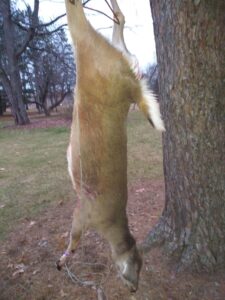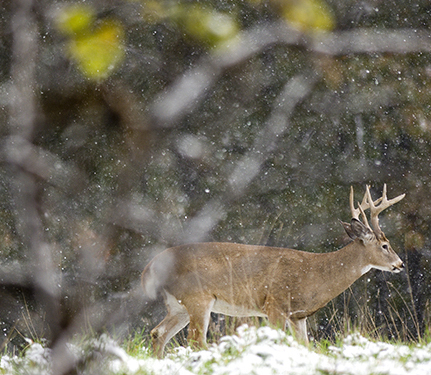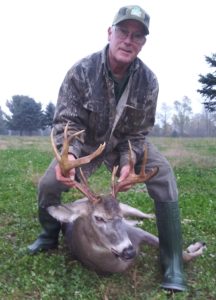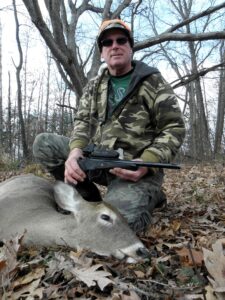Reducing Michigan’s Deer Herd
By Glen Wunderlich
Charter Member Professional Outdoor Media Association (POMA)
If there is a sacred moment in the ethical pursuit of game, it is the moment you release the arrow or touch off the fatal shot…Jim Posewitz, hunter/author.
After sitting out the entire archery deer season, regular firearms season, and muzzleloader season, the time had arrived to get in the game. After more than 50 years in the pursuit of whitetail bucks each year, a new paradigm in deer management had begun to take shape in an effort to reduce the deer herd. The late antlerless deer season presented the opportunity to go beyond talking points; it was time to walk the walk.
Even though my Ruger American rifle .450 Bushmaster caliber had been zeroed in months before, I had to verify it was still on target. Originally, it had been set up to maximize point-blank range, but since I decided to limit potential shots to 100 yards, a slight adjustment in elevation was achieved. I was out to gain the requisite confidence of the marksman that I am and the mission was accomplished in short order.
Hunting from a brushed-in Cabela’s Zonz hub blind atop a 10×10 platform at ground level would become the perfect ambush site for well-established travel patterns. A homemade bipod designed particularly for the blind’s shooting-window height was fashioned for stabilizing the firearm for the sacred moment to follow.
Weather and wind were also considerations. The blind was intentionally erected to face east, as an option to most others facing the prevailing western winds. Nighttime temperatures were not predicted to be below the freezing mark for several days, which would make for good weather to hang an unlucky deer, while a southeast wind cooperated with the concept.
With a couple hours of daylight remaining, the first whitetail emerged from a woodlot. The Leupold BX-4 binocular confirmed it was a small buck fawn carelessly intent on browsing available alfalfa and clover. As others began to follow the youngster, I studied each of them and discovered that at least two of them were bucks with shed their antlers and were to be avoided. Aside from fawns and antlerless bucks, a yearling doe was among the group; however, I was holding out for a trophy doe, if ever there was such a thing.
Another doe appeared to be the dominant animal in the group, as it chased one of the antlerless bucks from its presence. No doubt in my mind, this was the keeper I sought.
The doe moved farther into the opening almost directly in front of me some 60 yards away. It was extremely cautious, as most mature does are, when it paused to stare in my direction. Not knowing whether she had picked me off, and not wanting the wise deer to alert others, the crosshairs were settled onto an exact aiming point behind the front leg.
Pow! The large female gave the telltale sign of a positive hit, as she mule-kicked and made a U-turn toward cover. As the whitetail doe whirled around, I could see the red exit wound of a dead deer running. The perfect plan had come together.

Mature Doe taken in the late antlerless deer season
There won’t be any trip to the taxidermy shop this year, and there won’t be any antler or tag soup on the menu. However, there’s good reason to be satisfied with a task designed to help mitigate the pending crisis of too many deer.




